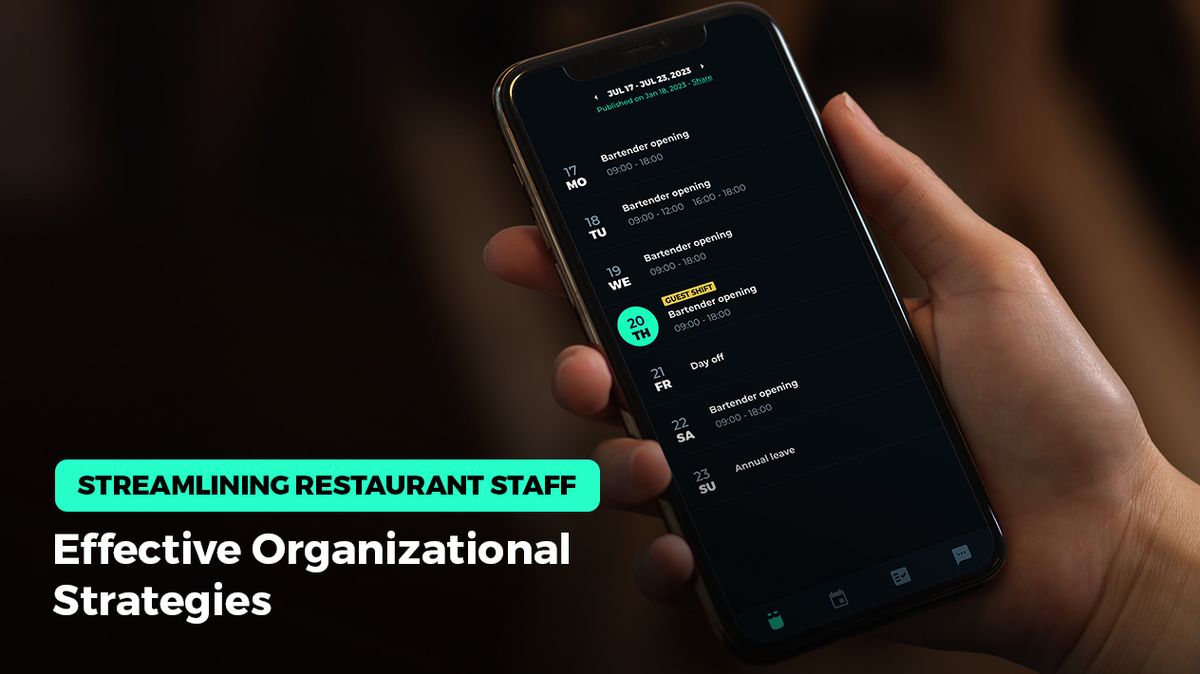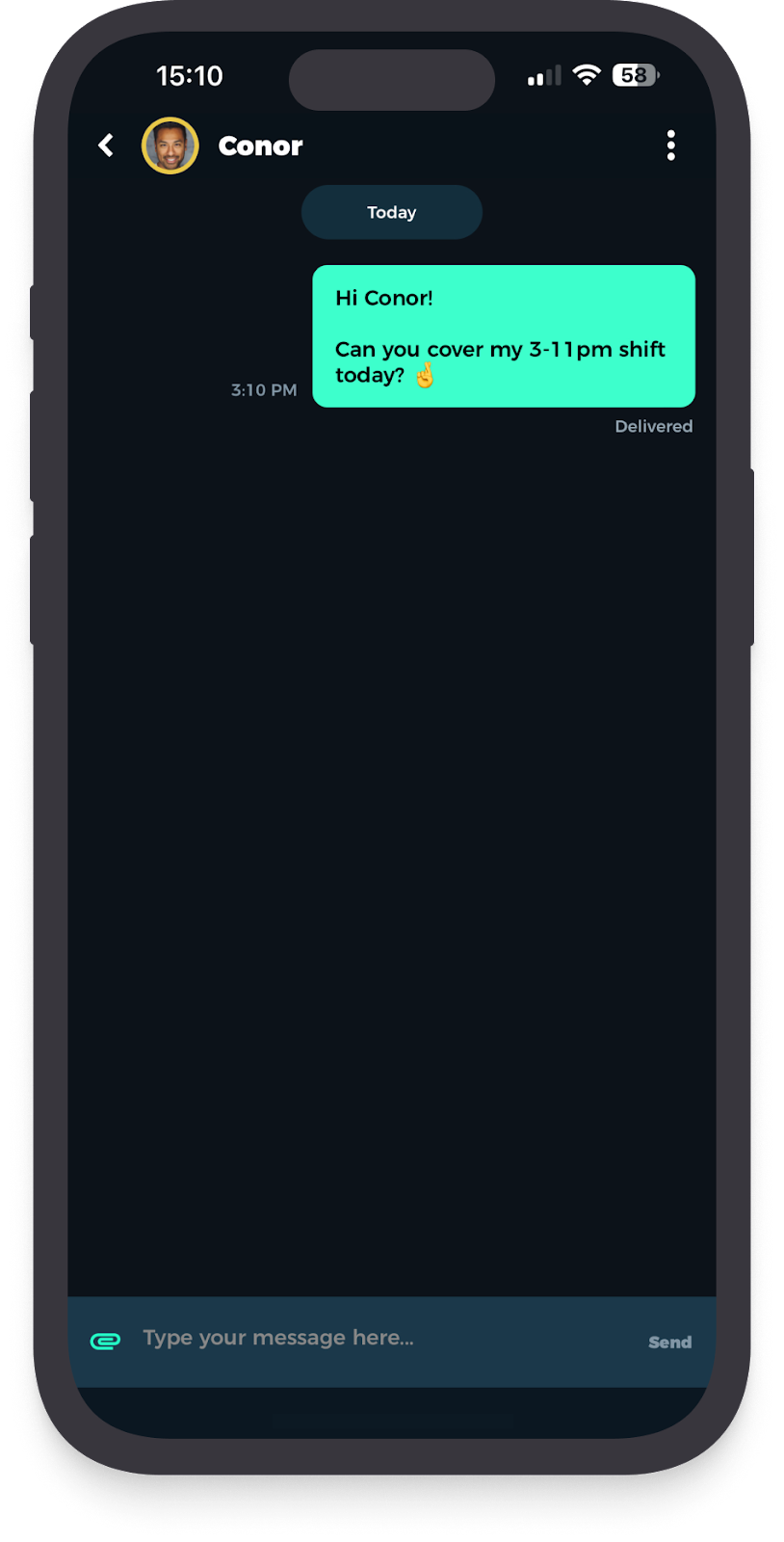Streamlining Restaurant Staff: Effective Organizational Strategies

The organization of restaurant staff is crucial for the success and smooth operation of any dining establishment. Understanding how to manage a restaurant successfully involves providing exceptional service, fostering a positive work environment, and ensuring overall efficiency.
In this article, we will delve into organizing front-of-house, back-of-house, and management staff, various organizational structures, and the significance of communication and coordination within the team to help you become a better restaurant manager.
Definition and explanation of front-of-house staff

Front-of-house staff are the employees who interact directly with customers, ensuring an exceptional dining experience and their satisfaction.
Examples of front-of-house staff positions include host/hostess, server, bartender, busser, and food runner.
Front-of-house staff have a variety of roles and responsibilities, such as greeting and seating guests, taking orders, serving food and drinks, maintaining a clean and inviting dining area, and handling customer inquiries and complaints.
Definition and explanation of back-of-house staff
Back-of-house staff are the employees responsible for food preparation and other behind-the-scenes tasks that contribute to the overall dining experience but do not involve direct interaction with customers.
Examples of back-of-house staff positions include chef, sous chef, line cook, prep cook, dishwasher, and expeditor.
Back-of-house staff ensures that food is prepared and cooked to perfection, adhering to recipes and presentation standards. They also maintain a clean and organized kitchen, manage inventory, and ensure compliance with food safety regulations.

Photo by Camille Chen on Unsplash
Management staff
Management staff are responsible for overseeing the daily operations of the restaurant, ensuring that both front-of-house and back-of-house staff work cohesively to provide an outstanding dining experience.
Examples of management staff positions include general manager, assistant manager, front of house / back of house manager, and sometimes the owner.
The management staff is responsible for hiring and training employees, managing finances, developing and implementing policies and procedures, and ensuring that the restaurant meets or exceeds customer expectations.
Explanation of different types of organizational structures used in restaurants
Restaurants may use different organizational structures, such as hierarchical or flat, to manage their staff.
- Hierarchical Structure: This structure features a clear chain of command, with each employee reporting to a direct supervisor, who then reports to higher-level management. It is commonly used in larger restaurants or those with a more formal atmosphere.
- Flat Structure: In a flat structure, there are fewer levels of management, and employees may have more autonomy and responsibility. This structure is often found in smaller restaurants or those with a more casual atmosphere.
Advantages and Disadvantages of Each Type of Organizational Structure
Importance of communication and coordination in restaurant staff organization
Effective communication and coordination among restaurant staff are essential for seamless operations, ensuring that every team member is on the same page and working towards a common goal—providing an exceptional dining experience.
Methods of communication and coordination
- Shift Meetings: Conducting daily or weekly shift meetings helps keep employees informed about updates, menu changes, and any other relevant information.
These meetings also provide an opportunity for staff to discuss any issues or concerns.
2. Communication Tools: Utilizing communication tools such as employee managing apps like Blend or centralized platforms can help facilitate real-time communication and coordination between team members.

3. Visual Aids: Posting schedules, daily specials, or important announcements in a central location can aid in disseminating information and ensuring that all staff members are aware of pertinent details.
4. Cross-Training: Encouraging cross-training among staff members helps create a more cohesive team and promotes a better understanding of each role's responsibilities, leading to smoother coordination and improved overall efficiency.
Blend is a cloud-based shift scheduling app and employee scheduling tool that has gained popularity in the hospitality industry in recent years. Designed specifically for restaurants and bars, Blend offers a range of features to automate and optimize employee scheduling, reduce errors, and improve communication.
Download Blend now and start your free trial!
In conclusion, mastering the art of restaurant management involves understanding the organization of restaurant staff, which is a critical factor in the success of any dining establishment. By recognizing the various roles and responsibilities of front-of-house, back-of-house, and management staff and employing the appropriate organizational structure, restaurant owners and managers can create an efficient, effective, and cohesive team.

Moreover, fostering a culture of communication and coordination will further contribute to the smooth operation of the restaurant, enabling staff to work together harmoniously and deliver an exceptional dining experience to every guest. By prioritizing and implementing these principles, restaurants can achieve both operational excellence and customer satisfaction. Whether you are a restaurant owner or manager, managing restaurant staff effectively and efficiently is crucial for the establishment's long-term success.
Blend can enhance all the above procedures. It is an auto-scheduling and shift planning app that can help businesses in the hospitality industry optimize their employee scheduling practices. By using technology to automate and streamline the scheduling process, businesses can reduce labor costs, improve operational efficiency, and ultimately enhance employee satisfaction and retention.
